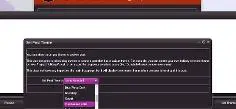Popular Blogs
All Blogs

Brief Technical Overview of the Galaxie Blog Installation Process
This article is for developers who want a deeper understanding of the Galaxie Blog installation process.

Galaxie Blog HTML5 Grid Interfaces
There are several HTML5-based grid interfaces used in Galaxie Blog. These grids are used to search meta data and open other detailed interfaces.

Introducing Galaxie Blogs Edit Post Interface
Introducing the Galaxie Blog Post Editor- one of the most full-featured, out-of-the-box WYSIWYG blog editors in the world.
Adding Images and Videos to a Bog Post
You can easily embed various media into a blog post using Galaxie Blog's Post Editor. Galaxie Blog will also manipulate the media uploaded to create optimized images for social media sharing.

Creating Beautiful Galleries Within a Blog Post Using Galaxie Blog
Galaxie Blog can create beautiful image galleries that take your images and automatically generate and display small thumbnail images on a post. Users may click on the thumbnail to display the original image. This is useful when providing documentation or displaying various pictures to the user in an attractive gallery layout
Adding Dynamic Bing Maps to a Blog Post
This article explains how you can add a map route or a static map to a blog post using the WYSIWYG Galaxie Blog Post Editor. You can add these maps as an enclosure and in an inline blog post.






